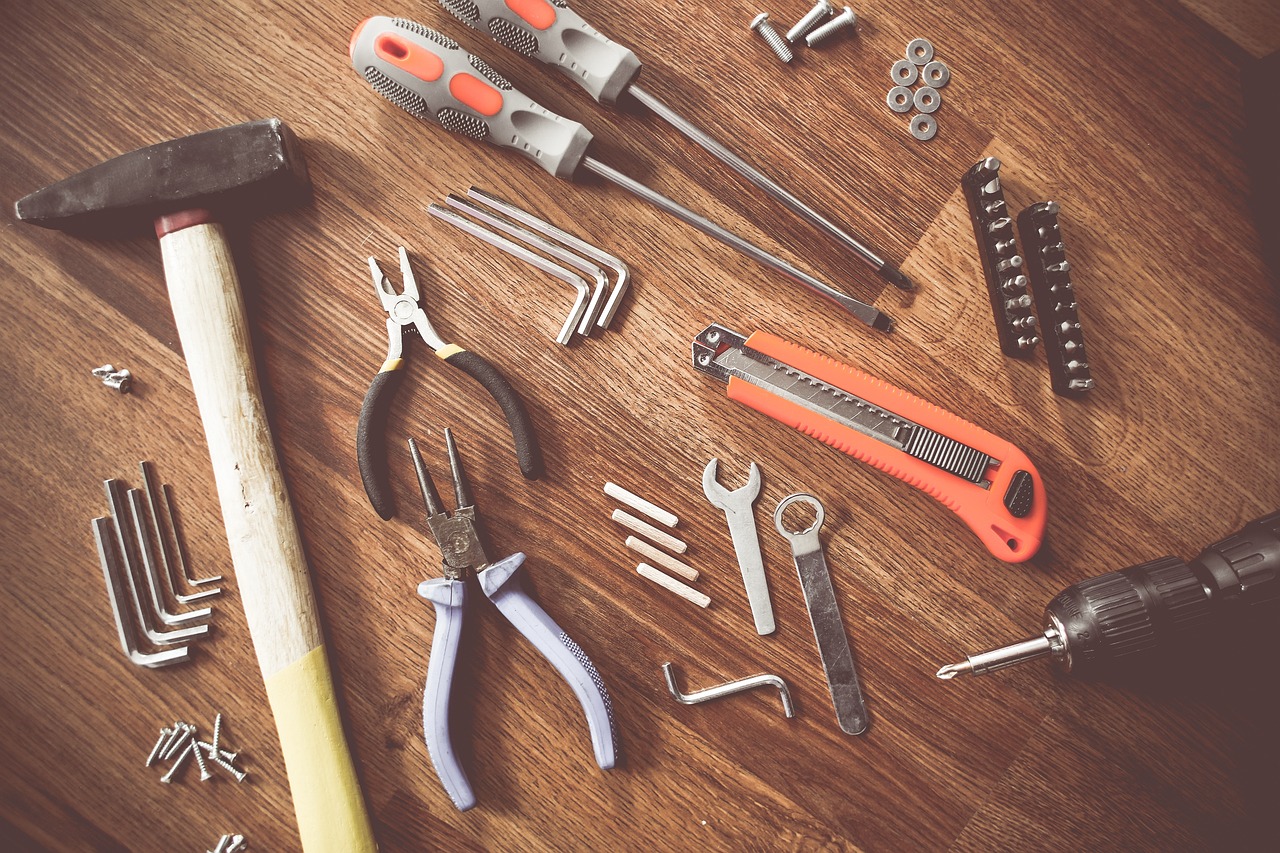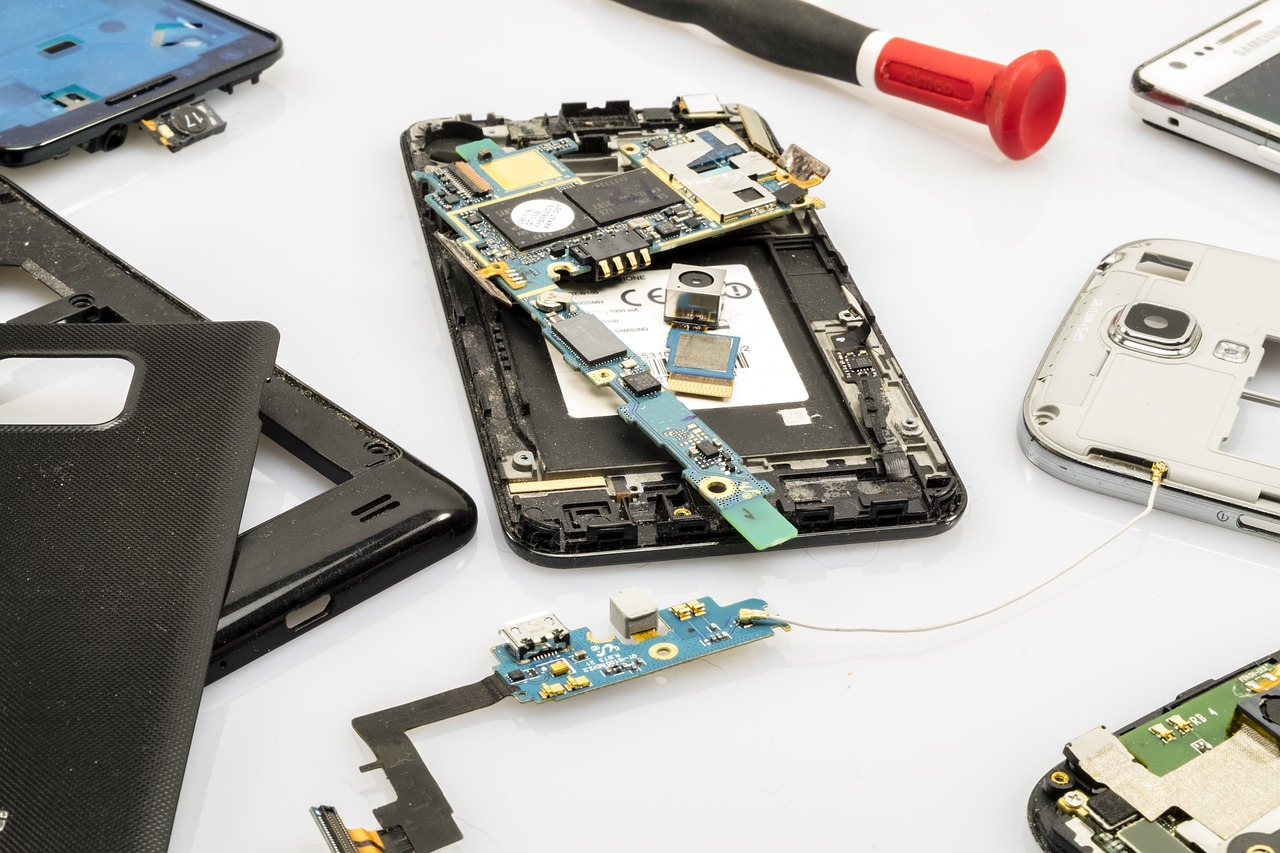The Right to Repair: Why It Matters and What You Can Do About It
The Right to Repair: Why It Matters and What You Can Do About It
Written By

When was the last time you fixed a broken item?
Chances are that if it was a relatively new product, especially an electronic device, it wasn’t recently.
Why? Because many manufacturers today oppose the Right to Repair.
What Is the Right to Repair?
The Right to Repair is exactly what it sounds like. It’s the idea that “consumers should have the right to repair the products they buy, that products should be designed so that they can be easily repaired, and that spare parts and repair manuals should be freely available” (“Community repair in the circular economy – fixing more than stuff”).
In other words, if you own an item and it stops working, it should be fixable by anyone—the manufacturer, independent repair shops, or you.
There are a myriad of benefits to repairability. First, fixing a product increases its lifespan, which keeps it out of the landfill longer. Second, repairs are often less expensive than purchasing a new replacement, which saves you money. Third, independent repair shops are usually local small businesses, so when they make your repairs, you are “shopping small” and helping your local economy.
Win-win-win, right?
Not so fast. What may seem to many consumers to be a matter of common sense is actually disputed by many manufacturers. Opposition is so widespread, in fact, that governments around the world are stepping in.
The Right to Repair Around the World
The Right to Repair is a global issue that leaves very little of the planet untouched in one way or another. In 2020, France passed Law n° 2020-105 of 10 February 2020 against waste and for the circular economy. Among its provisions is the requirement for manufacturers to display a Repairability Index on electric and electronic products. This index, which displays a score between 1-10, is intended to help consumers identify those products that would be easiest to repair in the event of a problem so they can make informed purchasing decisions.
In 2021, the United Kingdom passed The Ecodesign for Energy-Related Products and Energy Information Regulations 2021. This law requires manufacturers to make available “repair and maintenance information” as well as spare parts to independent “professional repairers.”
In 2023, the European Union (EU) Commission approved a new law to increase extant protections for repairing consumable goods such as washing machines and smartphones. In addition to adding products to the mandatory protections, the EU Parliament also voted to require manufacturers to provide spare parts to “independent repairers” at reasonable prices. EU governments and the Parliament will have to agree on a final version of the text before the law can go into effect, a step that is expected to take place this year.
Right to Repair in the US
In June 2021, a bill known as the Fair Repair Act, or HR 4006, was introduced in the House of Representatives in Congress. This bill would require manufacturers to ensure that any documentation, parts, and tools necessary to make a repair would be available to independent repair providers. The bill was referred to the House Committee on Energy and Commerce, then to the Subcommittee on Consumer Protection and Commerce, where it was introduced. In the Senate, S 3830—a related bill by the same name—was introduced and referred to the Committee on Commerce, Science, and Transportation. Both bills died after no additional action was taken on either.
Three weeks later, President Joe Biden issued an executive order that, among other things, called on the Federal Trade Commission (FTC) to issue rules to regulate “unfair anticompetitive restrictions on third-party repair or self-repair of items, such as the restrictions imposed by powerful manufacturers that prevent farmers from repairing their own equipment.”

To that end, a petition was filed with the FTC by online repair community iFixit and the US Public Interest Research Group (PIRG) in January 2024 requesting the issuing of rules that will “protect consumers’ right to repair products they have purchased.” This petition, which can be viewed on Regulations.gov, is open for public comment until February 2, 2024.
Finally, another bill was filed in the House in 2023 known as the REPAIR Act or HB 906. This bill would require vehicle manufacturers to provide owners with “direct, real-time, in-vehicle data generated by the operation of the vehicle that is related to diagnostics, repair, service, wear, and calibration or recalibration of parts and systems of the vehicle.” In addition, the manufacturer would be prohibited from requiring repairs to be performed using only its own dealers, parts, tools, or equipment, except in cases covered by warranty or the event of a recall. HB 906 is still alive today, having been forwarded in November 2023 by the House Energy and Commerce Subcommittee on Innovation, Data, and Commerce to the full House Committee on Energy and Commerce for further consideration.
What Action Are States Taking?
Right to Repair laws at the state level are a mixed bag. As of January 2024, although the majority of states have proposed Right to Repair legislation at some point, only four—Minnesota, California, Colorado, and New York—have actually passed Right to Repair laws, and each law has certain limitations on the types of products protected. For example, farm equipment is covered in California and Colorado, but not in New York or Minnesota.
Right to Repair in North Carolina
The Tar Heel State currently does not have any laws protecting the Right to Repair. A provision of the Farm Act that would have protected the right to repair farm equipment was removed from the bill in the state Senate in 2022 after opposition from manufacturers and dealers. However, a new bill was filed in the House in April 2023 to protect the right to repair medical equipment. HB 752, aka the Medical Equipment Right to Repair Act, would require any manufacturer of medical imaging equipment or medical radiation therapy equipment in North Carolina to “make available to any hospital or independent repair provider any support documentation, parts, or tools necessary to perform diagnostic, maintenance, or repair services.”
Why Not Repair?
With so much national and international support—past and present—for the Right to Repair, why has it been so difficult to codify the Right into law?
The majority of opposition has come from manufacturers and their authorized or contracted dealers, who have made many arguments against the consumer’s Right to Repair. One such argument is that it is unsafe for anyone other than their authorized technicians to try to replace or fix their products since only they have specialized knowledge, training, tools, and parts to do so. This was one argument used to justify the removal of the Right to Repair provision from North Carolina’s Farm Act in 2022.
However, while the safety of the product, technician, and user should always be a key consideration, the FTC’s 2021 report Nixing the Fix: An FTC Report to Congress on Repair Restrictions, repudiates the claim that such considerations should restrict product repairability. The report notes that manufacturers can lessen the risks by making available the tools and parts necessary, and it also suggests that manufacturers not doing so may actually be making safety issues worse. On a practical level, Consumer Reports released a survey in 2021 in which it found that most respondents who had ever had a vehicle, small home appliance, or large home appliance fixed both at an authorized location and an independent shop felt the quality of workmanship and parts was about the same in both places. Only for smartphones did respondents feel that the quality of parts was slightly better at the authorized location, and they felt that the quality of workmanship was about the same in both.

Another claim is that attempting a repair will void the product’s warranty. However, passage of the Magnuson-Moss Warranty Act 1975 made it illegal for manufacturers to void a warranty due to the use of third-party repairs or aftermarket parts, as long as those repairs or parts don’t damage the product. Unfortunately, most consumers do not seem to realize this, as the majority of respondents to the Consumer Reports survey indicated that even just the perception that they might void the manufacturer’s warranty would prevent them from choosing an independent repairer for their product.
The FTC ultimately concluded, “Although manufacturers have offered numerous explanations for their repair restrictions, the majority are not supported by the record.” But that hasn’t meant an end to repairability opposition.
Built-In Issues
As consumers have continued to self-repair or use independent options, manufacturers have not just stuck to trying to convince them with arguments. Many have gone to the extreme of building their opposition directly into their products. Apple, John Deere, and certain medical equipment manufacturers are just a few that have made headlines for designing and building products to be difficult or even impossible to repair for product owners and even independent repairers.
Apple began using its proprietary pentalobe screws on its 2009 MacBook Pro to prevent users from replacing the battery, and it has also used the screws to build its MacBook Air and iPhone products. At the time it began using these screws, it was extremely difficult to remove them without a specific type of screwdriver that the everyday user did not own, which usually forced them to take their device to Apple or an authorized repair technician. Similarly, modern John Deere farming equipment is built with sensors connected to software that requires a dealer to clear diagnostic codes whenever there’s a problem—codes that prevent the machine from running until the code is cleared. Finally, some medical device companies insert microchips into electrosurgical devices such as electrophysiologic catheters that shut down the device after one use. The microchips seem to have no other purpose than preventing reuse, and there is no clinical or scientific advantage to using the device only once.
Companies Supporting Right to Repair
Although many of the major manufacturers have not been in favor, there are some companies that support the consumer’s Right to Repair. For example, Amsterdam-based electronics company Fairphone focuses on sustainability, producing mobile phones and headphones that can be fixed by owners. The company sells spare parts and provides video tutorials on its website. Likewise, laptop company Framework makes modular laptops that owners can order pre-configured or put together a customized kit of modules to assemble a customized machine. They also sell tools and parts to enable owners to repair and upgrade their devices themselves, providing how-to guides on their website with instructions, videos, and annotated images. Even major companies like Apple and Samsung are starting to get on board the repair bus by offering repair kits to individuals and independent shops, although so far the results have been mixed.

Your Right to Repair
The Right to Repair is an important issue for many reasons. The ability to repair our goods not only reduces the amount of waste we produce—it also saves money and sometimes even lives.
Want to get involved and express your Right to Repair? You’ve got lots of options to make your voice heard!
- Through February 2, 2024, you can submit a comment to the FTC on the Petition for Rulemaking of PIRG and iFixit.
- You can also contact your members of Congress and let them know what you think of HR 906, the REPAIR Act.
- If you want to really get into the weeds, you can track the status of Right to Repair legislation across the US.
- In North Carolina, you can reach out to your Representative about HB 752, the Medical Equipment Right to Repair Act.




















Great article, and a crucial topic you’ve covered! The Right to Repair movement is not just about fixing our broken devices; it’s about empowering consumers and combating the throwaway culture that dominates our society.
One fascinating aspect of this movement is how it intersects with technologies like Chargie or battery limiters. These tools can serve as a workaround to built-in obsolescence, extending the lifespan of our devices. By controlling the charging process, they help mitigate battery degradation, ultimately reducing the frequency of replacements.
For followers of the Right to Repair movement, this is a game-changer. It’s not just about accessing repair manuals or spare parts; it’s about having the tools to maintain and prolong the life of our gadgets, making them truly ours. Plus, it aligns perfectly with the movement’s ethos of sustainability and self-empowerment.
I’m excited to see more discussions and actions around this crucial topic. Keep up the great work in spreading awareness and advocating for our right to repair!